The az-smart marine consists of the following systems:
- High-voltage system (230V)
- Low-voltage system (12-24V)
- Safety system
- Marine system
- Convenience system
HIGH-VOLTAGE SYSTEM
ncoming shore power is continuously measured by a smart meter, which logs voltage, current, and power data for up to a week. The smart meter also stores data on electric consumption indefinitely in hourly, daily, monthly, and yearly breakdowns.

The generator's produced power is also measured by a smart meter. An electrically controlled switch selects the power source for the boat.


Instead of a classic switch, push buttons can be used to manually select the high-voltage source. Existing fuses are retained, and DIN rail-mounted smart meters are installed after the fuses, measuring voltage, current, and power for each circuit while also functioning as switches.

With these, any circuit can be remotely turned on or off, and real-time information on consumption for each circuit is available.
Remote switching is a secondary function, with the primary role of these devices being to operate various automated systems. For example, when the generator starts (which is also automated) and its voltage reaches the set level (e.g., 230V ± 10%), the system automatically turns on the battery charger and boiler, charging the batteries and producing hot water since the generator is already running. However, any other consumer can also be programmed.

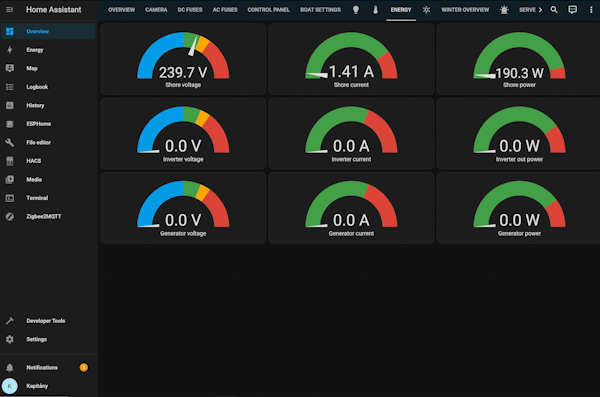
Inverter
With inverters like Victron and Voltmaster, it is possible to switch the inverter on and off using our system while monitoring the working batteries' voltage.
LOW-VOLTAGE SYSTEM


Retaining the original fuse panel, a power module with 18 high-current and 8 low-current outputs is installed, which is a freely programmable power distributor.
Outputs can be programmed to trip at specific currents and to allow overcurrent for a set number of milliseconds. The significant advantage is that, in case of overload, it is sufficient to turn the affected output off and then back on again. Information is provided on the instantaneous current, which can be crucial on a boat. For example, in the event of faster-than-usual battery discharge, troubleshooting is easier, and the system can provide a warning if the upper current limit (e.g., 90%) or a preset deviation from the pattern (e.g., continuous high current consumption) is reached. The switch between the classic fuse panel and the power distributor is realized with a high-current relay, allowing for easy switching back to the classic operation in case of malfunction. These outputs can also be included in automated systems.
For switching additional consumers on a specific circuit, there are several options. Wi-Fi switchable 1, 2, or 4 relay modules are available, with both 10A and 30A relays. Each of these can be fitted with a current sensor with a 30A measurement limit. These relay modules can be switched either via Wi-Fi or built-in push buttons. For example, when the boat is switched to anchor/buoy mode, the navigation light circuit is turned on after sunset and the anchor light is turned on. After sunrise, these lights are turned off. In navigation mode, navigation lights are turned on similarly, at a preset time before sunset or at a specified light intensity (lux).
Living area lighting control:
LED lighting is now a standard requirement on boats. This is achieved using wireless (Wi-Fi, ZigBee) LED control modules. The module also functions as a dimmer and can be controlled by any number of push buttons or paired with an RF remote control, which can also be wall mounted.



Solar system
Our system is compatible with Victron and Mastervolt solar chargers for continuous monitoring of charging.


SAFETY SYSTEM
The ship's sensors (such as water intrusion and sewage tanks) are connected using a galvanic isolator, allowing the az-smart system to display information from these sensors. Our Wi-Fi sensor modules can measure all analog quantities, including voltage, current, analog instrument values (fuel level, freshwater level, oil pressure, engine coolant temperature, etc.), and environmental temperature for batteries and motors. If the boarding ladder does not have a state sensor, we can retrofit one, providing an alert about the ladder's status when departing.

For doors and windows, we use wireless, stick-on battery-powered opening sensors, along with motion detectors (PIR) and smoke detectors (engine room, battery compartment, salon, cabins) for enclosed spaces. Our custom Wi-Fi sensor modules can measure temperature, humidity, air pressure, UV index, light intensity (lux), acceleration, magnetometer (compass), tilt, GPS, etc.
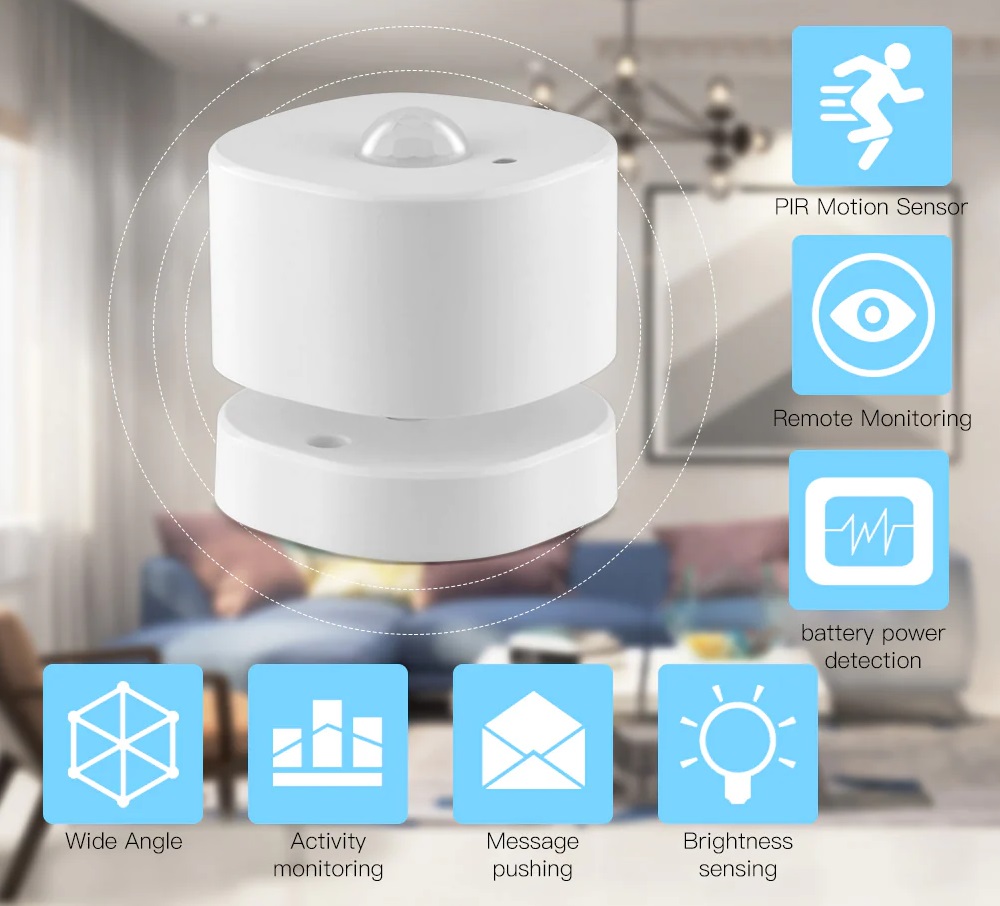

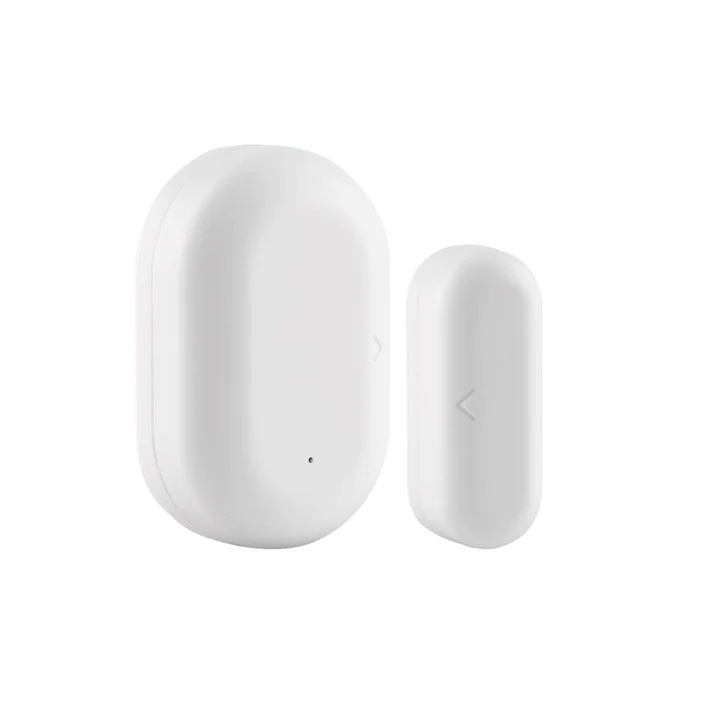
An essential and useful element of the security system is the anchor and buoy guard. The anchor guard uses the ship's depth gauge and anchor chain counter sensor to obtain water depth and released anchor chain length data. When the captain reverses to set the anchor and decides it is secure, they press a button to signal the system to record the anchor position. We then calculate the anchor's GPS position using simple math, correcting the anchor chain length with depth (Pythagorean theorem), and considering the fixed offset distance between the GPS antenna and the anchor winch. If the ship is outside the virtual circle around the anchor, an alert is triggered. The buoy guard works similarly. When the buoy is taken out of the water, the ship's direction and the distance between the GPS antenna and the ship's bow are used to calculate the buoy's GPS position. The safe circle's radius can be calculated from the water depth and the height of the ship's bow above the water level. This also gives an alarm if the ship is not within the safe circle.
Door and window opening sensors operate with button cells, lasting 6-8 months. Motion and smoke detectors have a 2-3-year operational time, using special long-life batteries.

The system can also function as an alarm, based on door opening sensors and motion detectors' data. In case of an alarm, a local siren may sound, but primarily, the owner's mobile phone is notified.

Our security system can display images from cameras installed on the vessel.
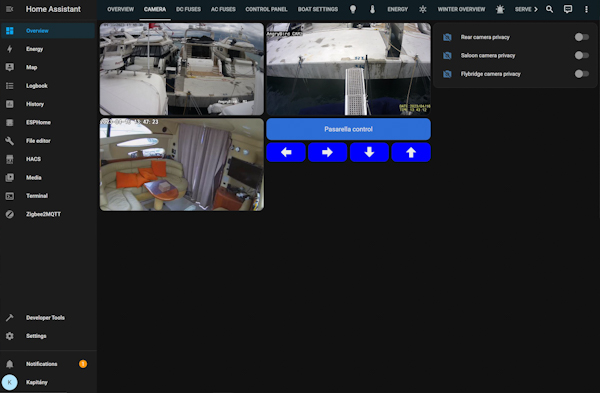
Our system can include a GPS receiver that continuously provides the vessels' position and can forward this information to any fleet management system.

MARINE SYSTEM
The az-smart system can connect to the NMEA2000 network. Data on the network (speed, GPS, depth, ship direction, wind direction, wind speed, engine(s) data, fuel tank(s), sewage tank(s) status, trim tab status, etc.) are all displayed in our system. We continuously log this data, and it is remotely accessible. If the ship has older analog-controlled engines, our digitizing module can receive their parameters and, if necessary, transmit them to the NMEA2000 network. Our digitizing module has 16 analog inputs (e.g., water temperature, oil pressure, tank levels, etc.), 8 digital inputs (low oil pressure, charging error, etc.), and two rpm inputs. This data is logged and remotely accessible.
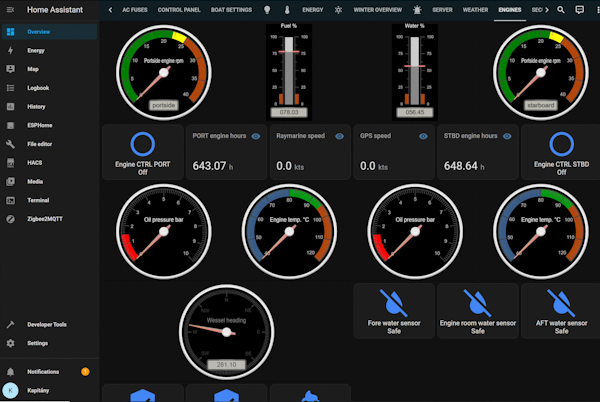
For older engine types, we have a consumption measurement system consisting of two flow meters per engine to measure the fuel flow in the supply and return lines, calculating consumption.

COMFORT SYSTEM
The primary component of the comfort system is our generator starter module.


This module is capable of automatically starting and stopping diesel and gasoline generators, enabling various convenience functions. For example, when the working batteries' voltage drops critically low, it automatically starts the generator and begins charging the batteries.
With a virtual switch on the guest control panel, the electric stove can be turned on. The system checks shore power: if none is available, it starts the generator and turns on the electric stove.
There is an option to place a virtual switch for TV watching/coffee making on the same control panel, which turns on the sockets from which the TV, coffee maker, etc. are connected, with consumers having less power than the inverter's maximum output. In the absence of shore power, these sockets are connected to the inverter. If the battery charge level drops during this time, the generator will start.
Various automation can be created. For ships with electrically operated windows in the salon, we have a window-opening module.

This module started from our system or from the old push buttons, can fully open the window, switching off on a current limit, which we can adjust as desired, and the overcurrent time can also be adjusted. With the help of a rain sensor, automation can be set up. If we are not on the ship, for example, 3 hours after sunrise, after the dew has evaporated, we open both windows one after the other. The windows remain open until sunset or close in case of rain. This way, the ship is constantly ventilated. When starting the engines or turning on the air conditioning, the windows automatically close.
We also have a "Pasarella" module, which can control the pasarella if necessary (e.g., in case of a discharged remote control). Convenience automation is the control of the "macerator". If we know how long it takes for the pump to empty the wastewater tank, we can program the system to start emptying for the appropriate time with a single button press. We can also interrupt this and continue later.
The system can provide audio alerts for anything, for example, through the Google Nest Mini speaker, it can announce messages in any language.
With temperature and humidity sensors, we can monitor the temperature in all cabins.

In winter mode, we can control and monitor the operation of electric dehumidifiers placed in the ship. With a custom-developed thermostat module, we can control any connector to which we connect an oil radiator, allowing us to set a specific tempering temperature with the oil radiator.

SUMMARY
The system runs on a single-board computer (SBC) installed in a ship, such as an Odroid C4 or Odroid M1. A GSM router (e.g., Mikrotik) is needed to ensure remote access and provide internet service on the ship. Battery-powered devices communicate on the ZigBee wireless platform, while other devices use either Wi-Fi or ZigBee. Our power module connects to our system via wired technology. Our system is built on the open-source Home Assistant platform, which we have customized and adapted to meet the needs of ships. The system can be accessed from any internet browser and from mobile devices through the Home Assistant app, available for both Android and iPhone devices.
Our system displays each alarm and event as a popup message and can also send them through the Telegram chat app. Tracking popup messages over time can be cumbersome and unreliable, while a chat app provides greater transparency. If there is no internet service in a specific sailing area, the ship cannot be accessed remotely, but all functions within the ship's internal network, including automation, continue to operate. A significant advantage of the system is that if unique needs arise beyond the above-mentioned features, we can likely develop them within a short timeframe (a few hours to 1-2 weeks, depending on complexity).
One major limitation of mobile internet access is the lack of a public IP address. The az-smart system logs in to the az-smart.eu server through a VPN connection, enabling access to the ship from anywhere. This is a monthly service costing €10/month or €100/year. The service includes a weekly automatic backup of the ship's system. Our cloud server does not store any data beyond the weekly compressed and encrypted backup.
US Copyright Office, Registration Number TXu 2-293-060
Date of registration november 16, 2021





